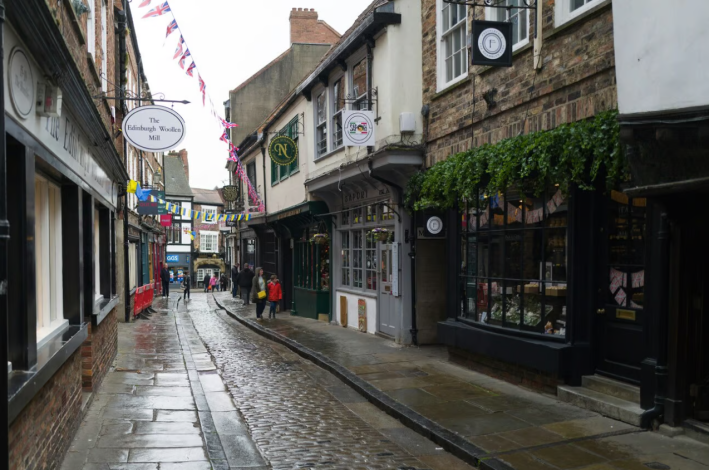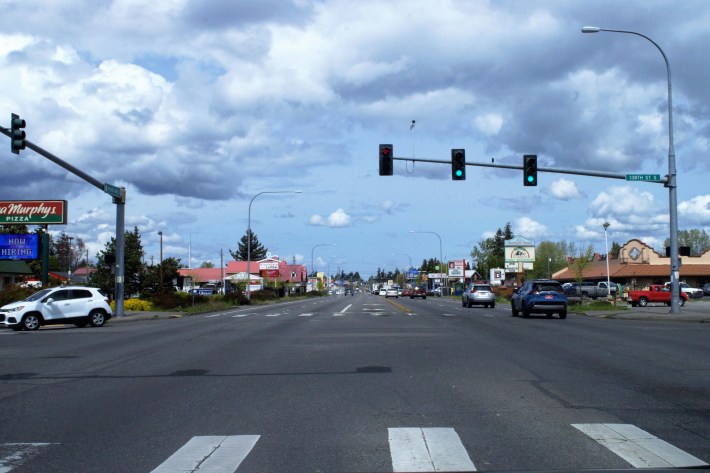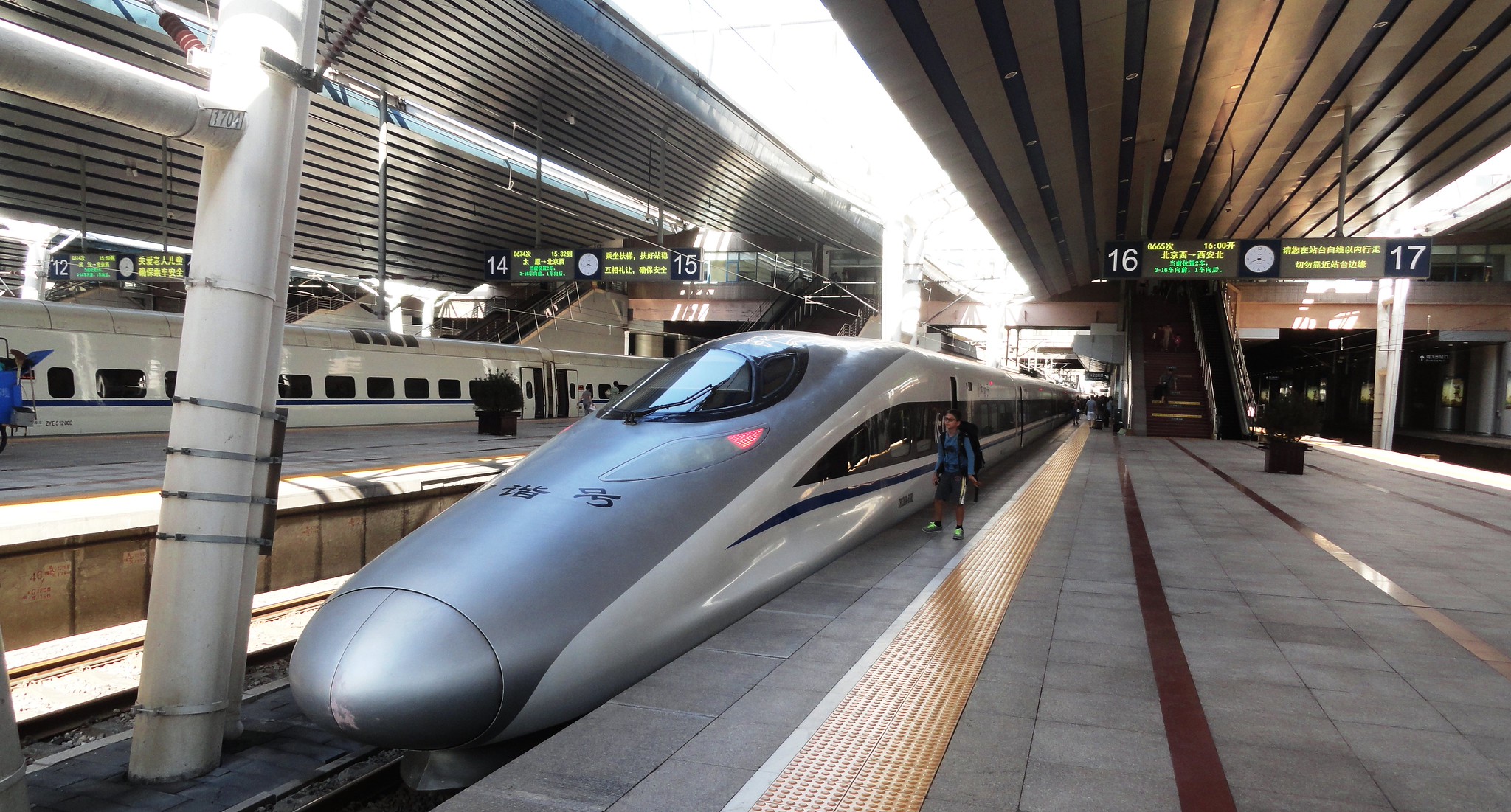Editor's note: a version of this article originally appeared on Resident Urbanist and is republished with permission.
The term ‘urban fabric’ describes the physical characteristics of cities and towns. This includes the streetscapes, buildings, soft and hard landscaping, signage, lighting, roads and other infrastructure. Urban fabric is to humans what water is to fish.
Urban fabric can be thought of as the physical texture of an urban area. In a sentence: what does it look and feel like to be there? This is something difficult to describe with words, but easy to see in pictures. For example, here’s a section of the urban fabric of Edinburgh, Scotland:

And here’s Delft in the Netherlands:

After seeing dozens of examples, patterns start to emerge. We start to see that the best places, no matter where they’re located, have things in common.
First of all, they’re filled with people, not cars. Second, they tend to have a certain coziness or protected feeling about them, rather than being large and wide open spaces.
Another important but other hard to see feature is that all land uses are mixed together. You might have a street lined with cafes and restaurants, but immediately above them are residences. Next door to a pet store is an office, and so on.
And of course we can contrast with a typical wide street (aka a stroad) in the United States:

If your goal is to build urban fabric where people feel comfortable and happy, this is what not to do. It does the exact opposite of everything in the first two photos.
It’s hospitable only to cars, not people. It is the opposite of cozy. My thesaurus says that the opposite of cozy is “uncomfortable”, but that simply does not capture it. A teeth cleaning is uncomfortable; this is downright hostile. It’s also massive; many roads are hundreds of feet across. It’s single use; there are only commercial uses lining the massive road, so to get between any two points you must drive.
So we can see the difference between these two urban fabrics, but why does it matter? Is one really better than the other? Yes, it is.
The fabric of our cities is a lot like the fabric of the clothes we wear: we spend a lot of time touching it. Similarly, the quality of the fabric our clothes are made from drastically changes the experience of wearing them. Spending time in the streets of Edinburgh or the lively plazas of Delft is like sleeping in an ultra-luxurious set of silk pajamas. Spending time in the image from the U.S. - aka most of the U.S. - is like sleeping in a nightgown made out of cockroaches and rusty nails.
To return to our aquatic metaphor, an individual living in poorly designed urban fabric is like a fish swimming in polluted water. It might be able to survive, but it won’t live a very good life, or as long as it could.
Well designed urban fabric makes us healthier, wealthier, and happier by default - just by existing in it. There are hundreds of examples I can cite of how this is true, but I’ve chosen three specific cases to look at here. High quality urban fabric:
- Provides Independence for Young and Old Alike
- Creates Social Life & Reduce Loneliness
- Makes You Wealthier
High Quality Urban Fabric Provides Independence for Young and Old
In 1969, 48 percent of children 5 to 14 years old walked or rode a bicycle to school. By 2009 that number had dropped to 13 percent, and I would bet it has continued to fall since then.
Contrast this with the situation in places with good urban fabric. For example, my wife is from the Netherlands. The standard there is for every child, from the age of 4 or 5, to ride their bike to school. Distance is no object; by high school she rode her bike 45 minutes each way. Though some days this wasn’t pleasant (when it’s raining you’re just told that “je bent niet van suiker gemaakt” meaning “you’re not made of sugar”), it made her independent and provided time to socialize with classmates outside of the classroom. And obviously it was great exercise!
But let’s leave the kids aside for now and just speak to your interest as a parent. Based on my very advanced math (20 minutes per day waiting in line times 180 school days = 3,600 minutes per school year) the average American parent spends about 60 hours every year waiting in school pick up lines. Multiply this by the 34 million children who are driven to school each year and we reach the simply staggering number of two billion hours wasted just waiting in line. That’s 85 million days. Every. Single. Year.
Who knows what we could accomplish as a society without spending 85 million days each year sitting in metal boxes waiting to pick up our children? I’m not sure we would have a cure for cancer, but I bet we would at least have some happier people.
If the fact that we take away our children’s independence while simultaneously wasting huge portions of our own lives makes you angry, you’re not alone.
It makes me angry too, and it’s one of the many reasons why I’m on a personal crusade to reverse this trend and actually build more places where children and adults alike have the freedom to walk or bike to where they need to go. I simply don’t want my children to grow up in a place where they are completely dependent on adults to maintain any kind of life of their own. I also don’t want to waste 60 hours a year idling in a school parking lot when I could be using that time more productively, like playing World of Warcraft.
High Quality Urban Fabric Creates Social Life & Reduces Loneliness
This is an easy one. All I need is a single Tweet to demonstrate the difference between the two types of urban fabric. The top image is bad urban fabric; the bottom is great urban fabric.
30 people getting coffee.
— XXI Century City (@urbanthoughts11) September 25, 2022
Sprawl vs. urbanism pic.twitter.com/W5QRE7ugkB
The question: In which one do you think you’re going to run into a friend? In which one do you think you’ll feel more social?
The urban fabric in the top image kills, and not just by smashing cars together. It kills in a more insidious way. By separating people, it removes the very foundation of community life: seeing other people.
In the top image it is possible to pull out of your garage, go through the Starbucks drive through, pull into a parking garage at work, and go back to your garage at home, all without interacting with a single member of your community (other than a couple coworkers at work). This is a problem not just because it’s unpleasant, but because loneliness actually kills.
In the United States, it’s a part-time logistics job just to see a friend. Everything is so far apart you must specifically coordinate a place and time like you’re arranging a product launch.
Good urban fabric, on the other hand, builds social and community life into your daily life. You can still meet up with friends at a set time, of course. But much more importantly, you naturally run into community members, acquaintances, and strangers as a matter of going about your day.
Jane Jacobs once wrote that “lowly, unpurposeful and random as they may appear, sidewalk contacts are the small change from which a city’s wealth of public life may grow.”
In other words: it is these casual sidewalk interactions that actually make a place feel like a community.
High Quality Urban Fabric Makes You Wealthier
I’ve saved my personal favorite for last: the cold, hard, math. Living in a place with low-quality urban fabric is expensive because it requires every person who lives there to own their own car. Places with bad urban fabric have lower house prices but are actually more expensive to live in overall once transport costs are considered.
Most people know cars are expensive to buy and operate, but the costs don’t stop there. Because money you spend on a car isn’t just about the money you spend on the car. It’s about what you could spend that money on if you weren’t compelled to spend it on your own personal expensive metal box. A dollar spent on compulsory private car ownership is a dollar not spent on a hobby you love, your child’s education, or any one of a million other things.
To pick one specific example, let’s assume you do live in a place with great urban fabric, rendering car ownership totally optional. Well, great news! Great urban fabric makes your financial life significantly better.
If you forego car ownership beginning at the age of 25, assuming average car ownership and operation costs, and instead invest that money in a retirement account, you would have an extra $3,155,308 when you’re ready to retire. In this case the cost of owning a car isn’t just the $1,015 per month, but the foregone value of what you could do with that money other than own a car.
Of course, instead of investing for retirement you may instead decide to spend the money to save for your child’s education, or take care of a family member, or thousands of other things.
If you forego car ownership beginning at the age of 25, assuming average car ownership and operations costs, and instead invest that money in a retirement account, you would have an extra $3,155,308 when you’re ready to retire.
That’s the whole point — it should be your choice to choose how to spend that money, not forced out of your hands to automakers and oil companies just because the place you live is a sprawling mess.
Viewed in this light, living in a place where car ownership is optional isn’t just more pleasant to walk around in, it actually makes you significantly wealthier. Pretty sweet, but this deal only works if you live in a place with great, car-optional urban fabric.
A new beginning
I am both more pessimistic and more optimistic than some of my peers in the fields of urbanism and real estate development. I am completely pessimistic that the problems with our urban fabric can be solved by reforming the places ruined by sprawl.
It’s possible to fix places like in the image above in the same way it’s possible to reverse entropy: it isn’t. The process of sprawl is irreversible. That is a bitter pill for a lot of people to swallow, but it’s the truth.
I am wildly optimistic, however, that this problem can be solved another way: by a group of passionate people getting together and building the alternative; a newly built place in the United States with amazing urban fabric. The kind of place that makes people living in Delft or Edinburgh jealous. And makes people sitting in traffic in Dallas, Phoenix, or Atlanta wonder what the hell they’re still doing there.
So there you have it: good urban fabric is good for you, bad urban fabric is bad for you, and the only way you’re going to see good urban fabric in the United States is if you help build it.






